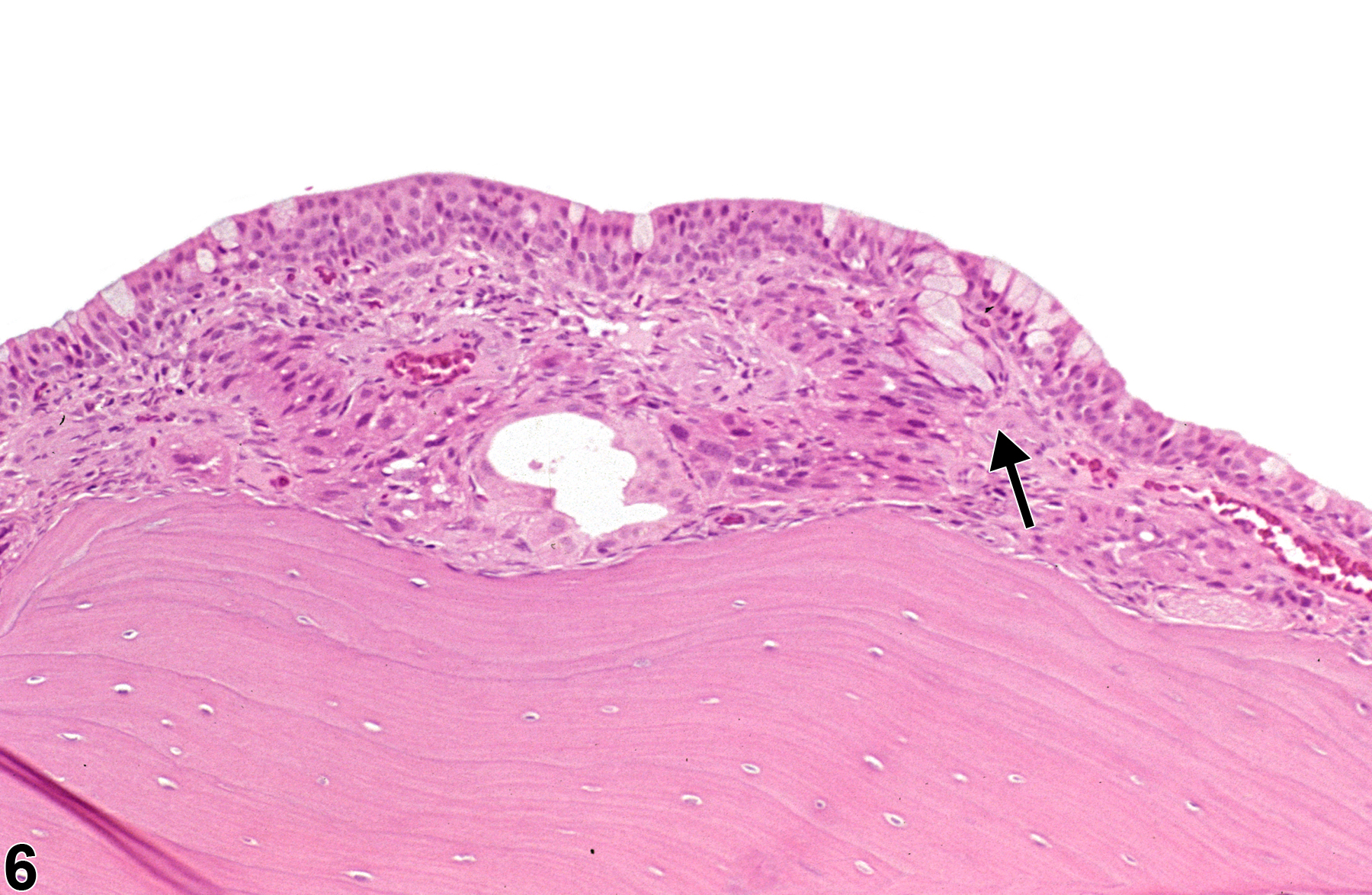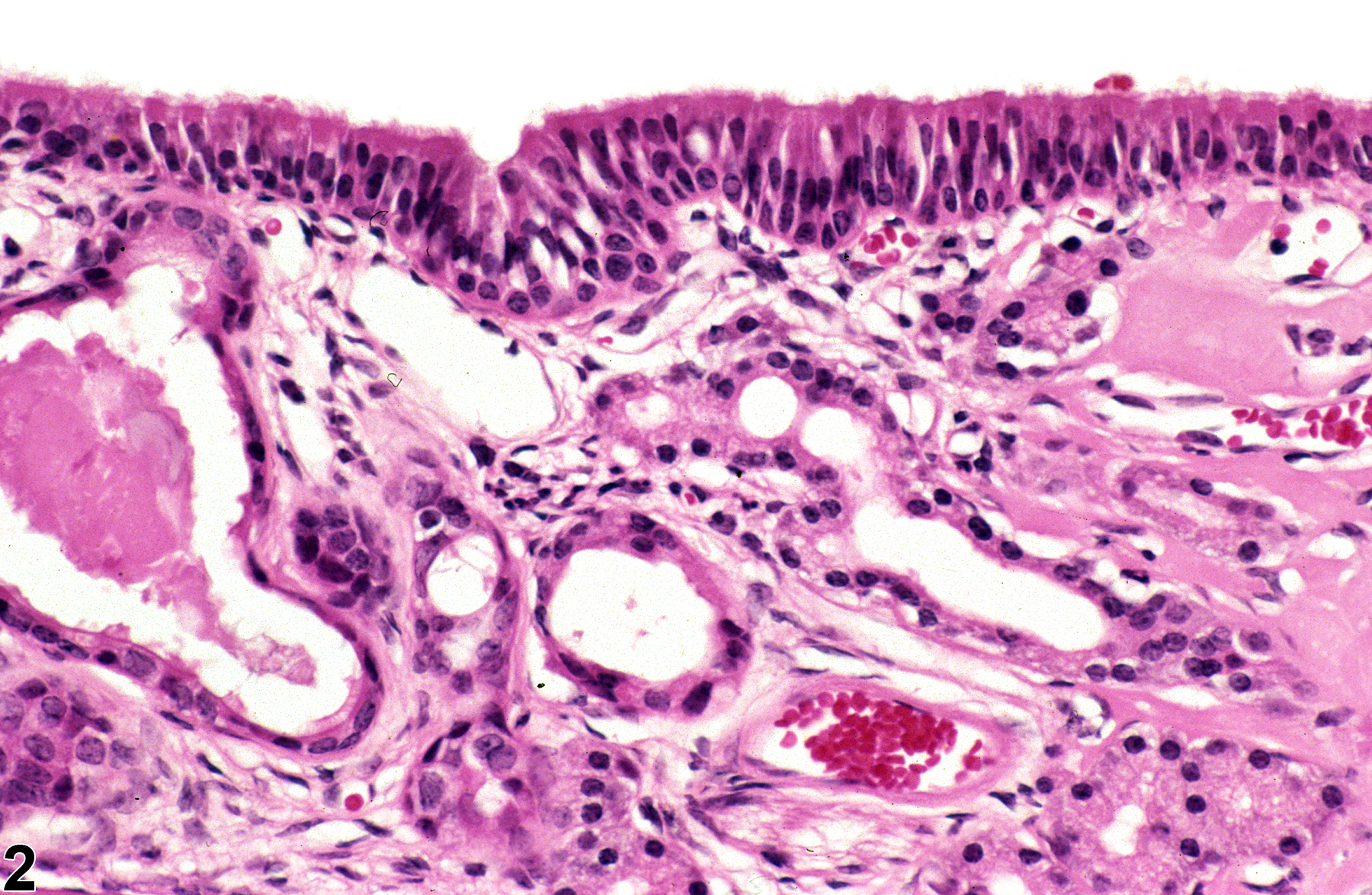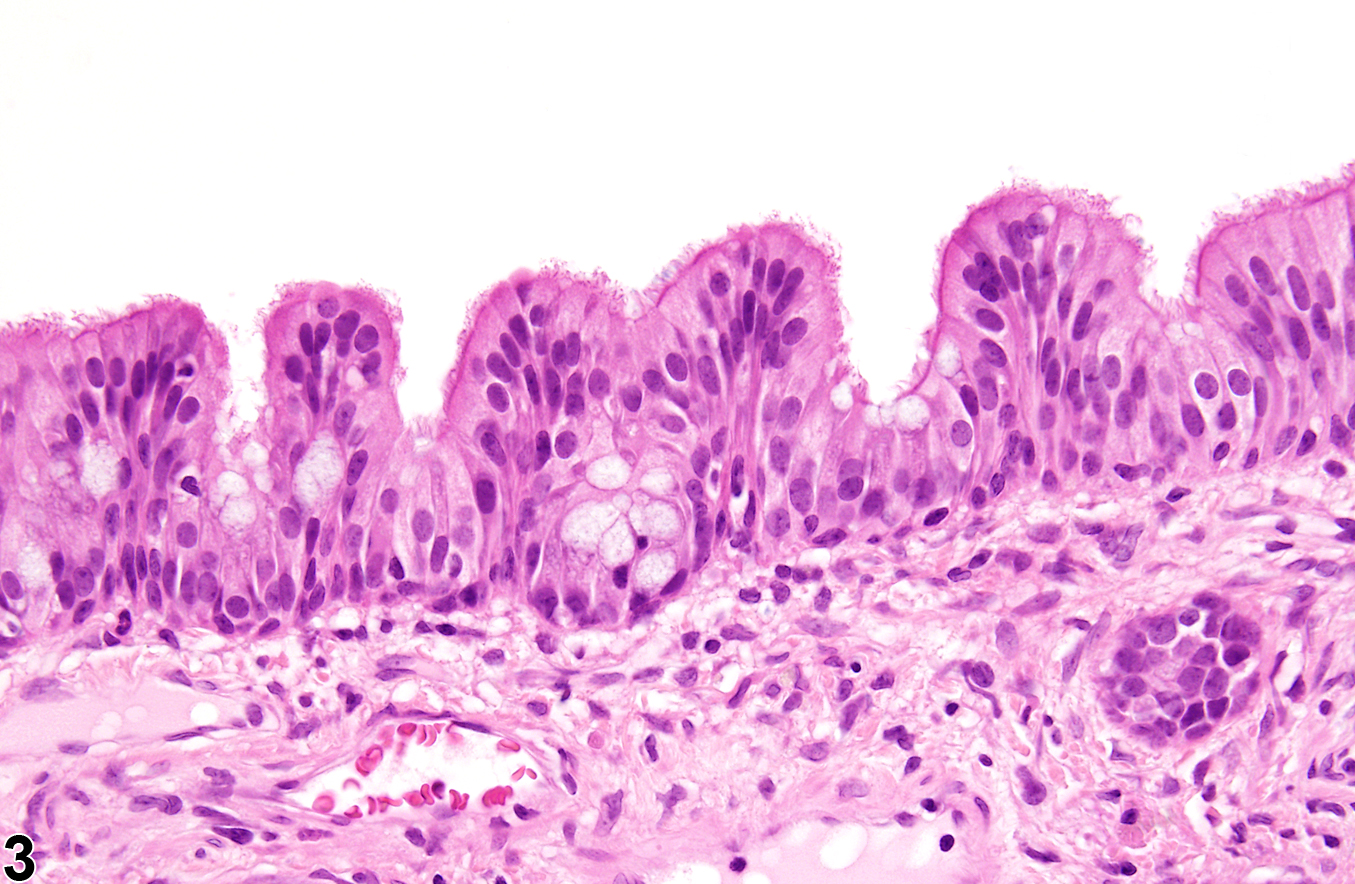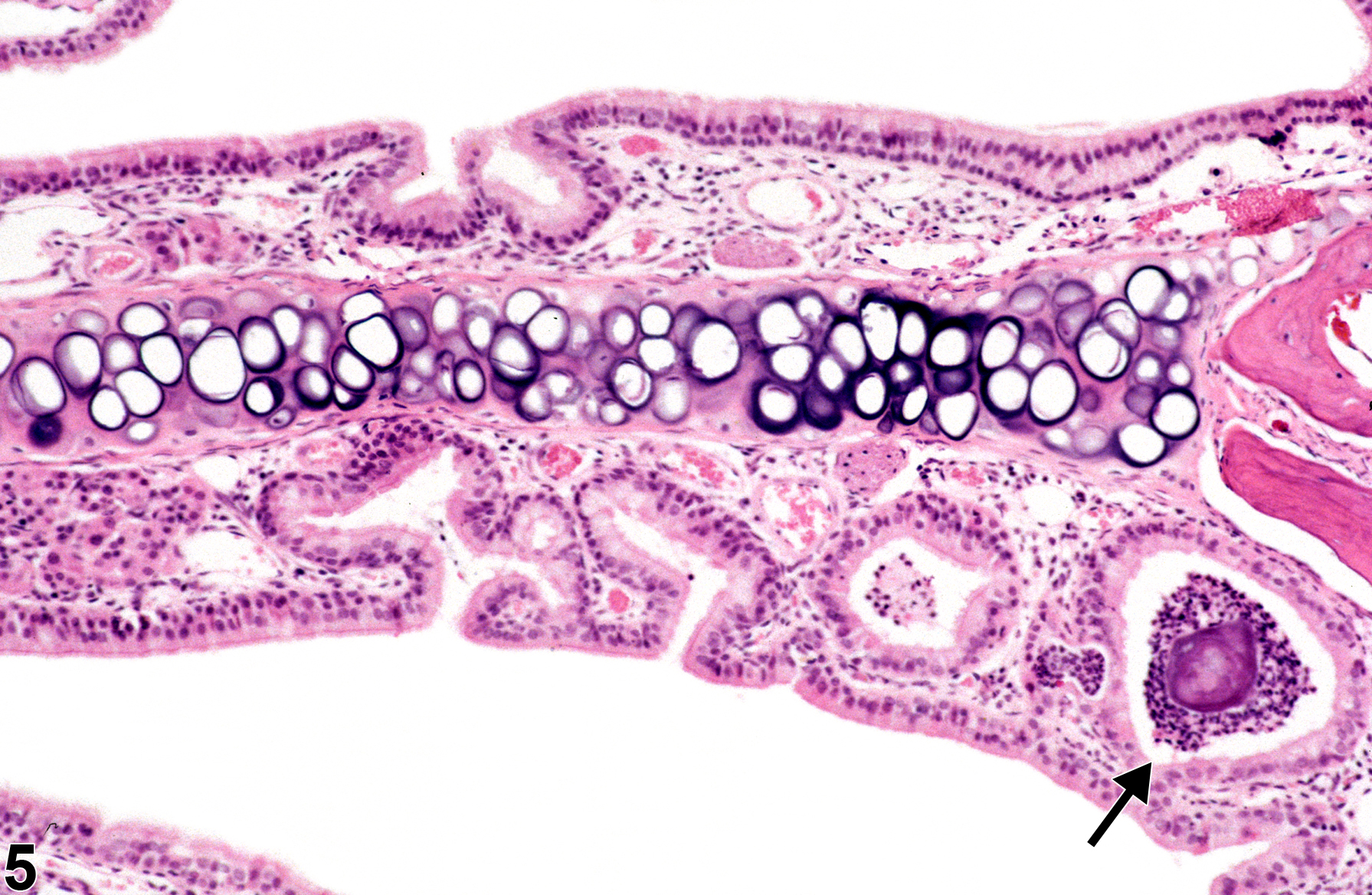Respiratory System
Nose, Epithelium - Hyperplasia
Narrative
Boorman GA, Morgan KT, Uraih LC. 1990. Nose, larynx, and trachea. In: Pathology of the Fischer Rat: Reference and Atlas (Boorman GA, Eustis SL, Elwell MR, eds). Academic Press, San Diego, 315-337.
Brown HR, Monticello TM, Maronpot RR, Randall HW, Hotchkiss JR, Morgan KT. 1991. Proliferative and neoplastic lesions in the rodent nasal cavity. Toxicol Pathol 19(4, pt 1):358-372.
Abstract: https://www.ncbi.nlm.nih.gov/pubmed/1813982Herbert RA, Leninger JR. 1999. Nose, larynx, and trachea. In: Pathology of the Mouse: Reference and Atlas (Maronpot RR, ed). Cache River Press, Vienna, IL, 259-292.
Monticello TM, Morgan KT, Uraih LC. 1990. Nonneoplastic nasal lesions in rats and mice. Environ Health Perspect 85:249-274.
Full Text: https://www.ncbi.nlm.nih.gov/pmc/articles/PMC1568333/National Toxicology Program. 1990. NTP TR-376. Toxicology and Carcinogenesis Studies of Allyl Glycidyl Ether (CAS No. 106-92-3) in Osborne-Mendel Rats and B6C3F1 Mice (Inhalation Studies). NTP, Research Triangle Park, NC.
Abstract: https://ntp.niehs.nih.gov/go/8892National Toxicology Program. 1992. NTP TR-410. Toxicology and Carcinogenesis Studies of Naphthalene (CAS No. 91-20-3) in B6C3F1 Mice (Inhalation Studies). NTP, Research Triangle Park, NC.
Abstract: https://ntp.niehs.nih.gov/go/7700National Toxicology Program. 1994. NTP TR-440. Toxicology and Carcinogenesis Studies of Ozone (CAS No. 10028-15-6) and Ozone/NNK (CAS No. 10028-15-6/ 64091-91-4) in F344/N Rats and B6C3F1 Mice (Inhalation Studies). NTP, Research Triangle Park, NC.
Abstract: https://ntp.niehs.nih.gov/go/6024National Toxicology Program. 2006. NTP TR-526. Toxicology and Carcinogenesis Studies of a Mixture of 2,3,7,8-Tetrachlorodibenzo-p-dioxin (TCDD) (CAS No. 1746-01-6), 2,3,4,7,8-Pentachlorodibenzofuran (PeCDF) (CAS No. 57117-31-4), and 3,3',4,4',5-Pentachlorobiphenyl (PCB 126) (CAS No. 57465-28-8) in Female Harlan Sprague-Dawley Rats (Gavage Studies). NTP, Research Triangle Park, NC.
Abstract: https://ntp.niehs.nih.gov/go/9307Renne R, Brix A, Harkema J, Kittel B, Lewis D, March T, Nagano K, Pino M, Rittinghausen S, Rosenbruch M, Tellier P, Wohrmann T. 2009. Proliferative and nonproliferative lesions of the rat and mouse respiratory tract. Toxicol Pathol 37(7 suppl):5S-73S.
Abstract: https://www.ncbi.nlm.nih.gov/pubmed/20032296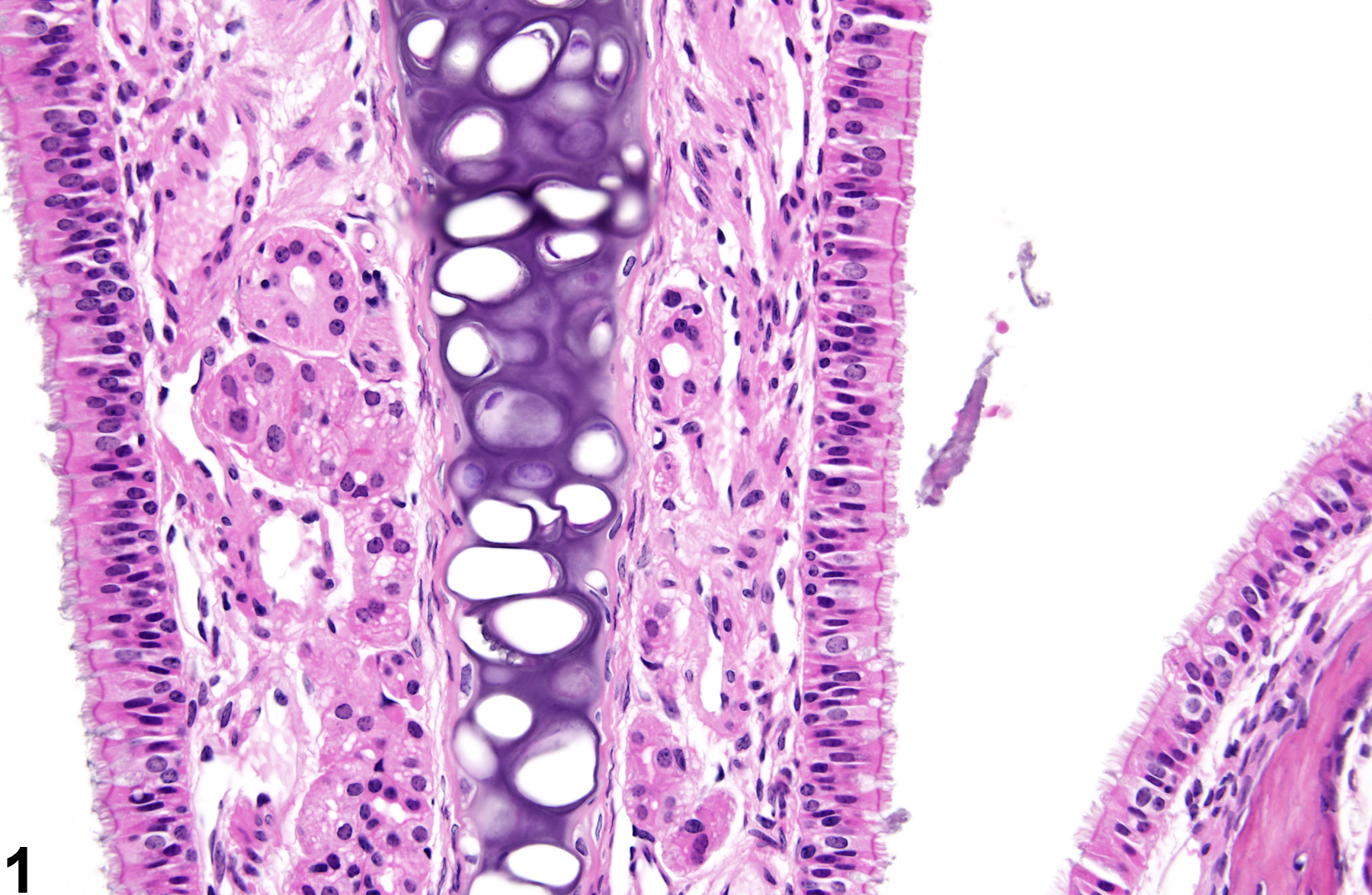
Nose, Respiratory epithelium - Normal in a male B6C3F1/N mouse from a subchronic study. The normal respiratory epithelium on the nasal septum is presented for comparison with Figures 2-7.
All Images
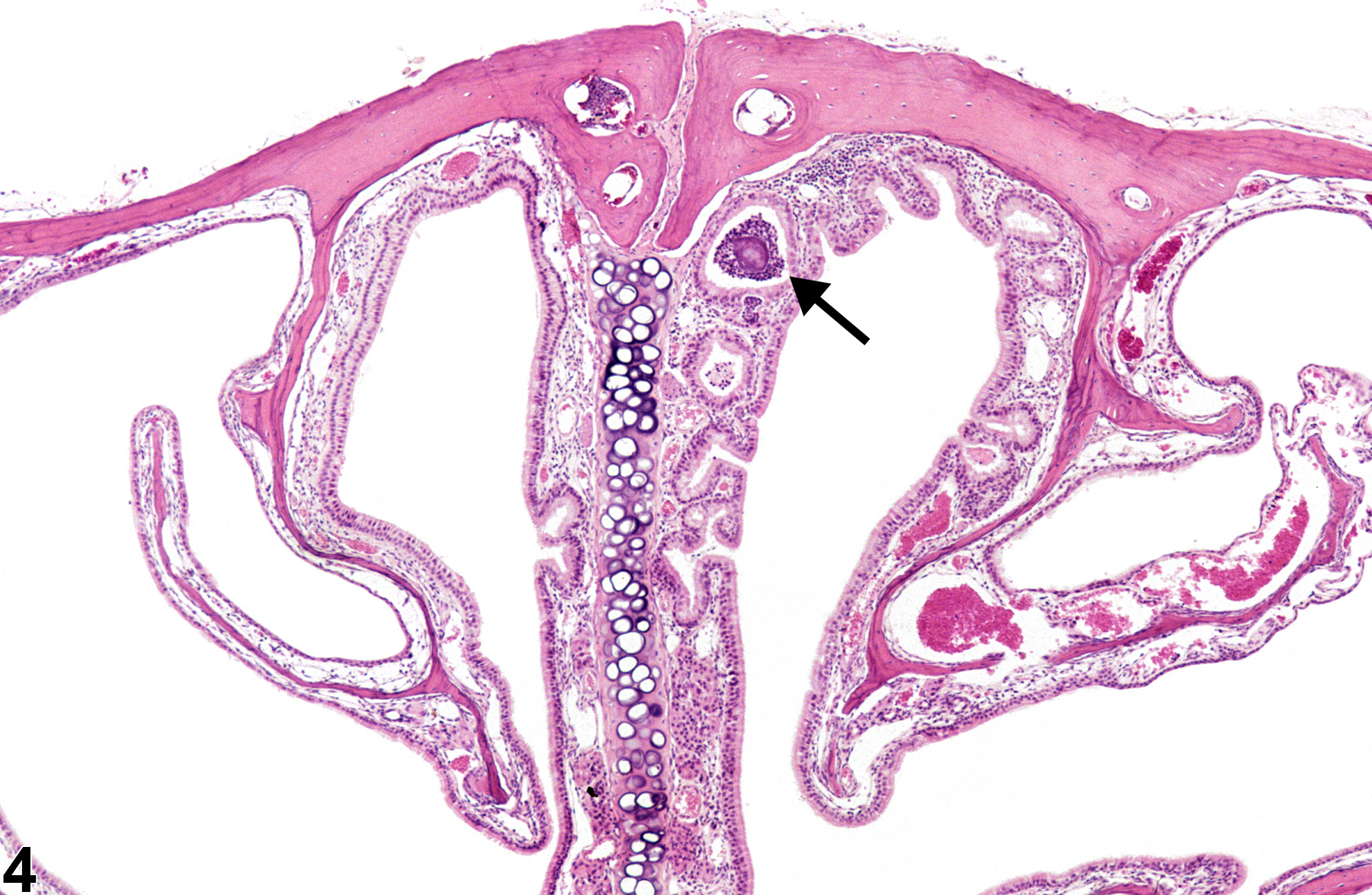
Nose, Respiratory epithelium - Hyperplasia in a male B6C3F1/N mouse from a chronic study. Proliferation of the epithelial cells resulted in thickening of the epithelium, with folding and invagination into the lamina propria forming pseudoglands. A concretion (arrow) is present within one of the pseudoglands.
